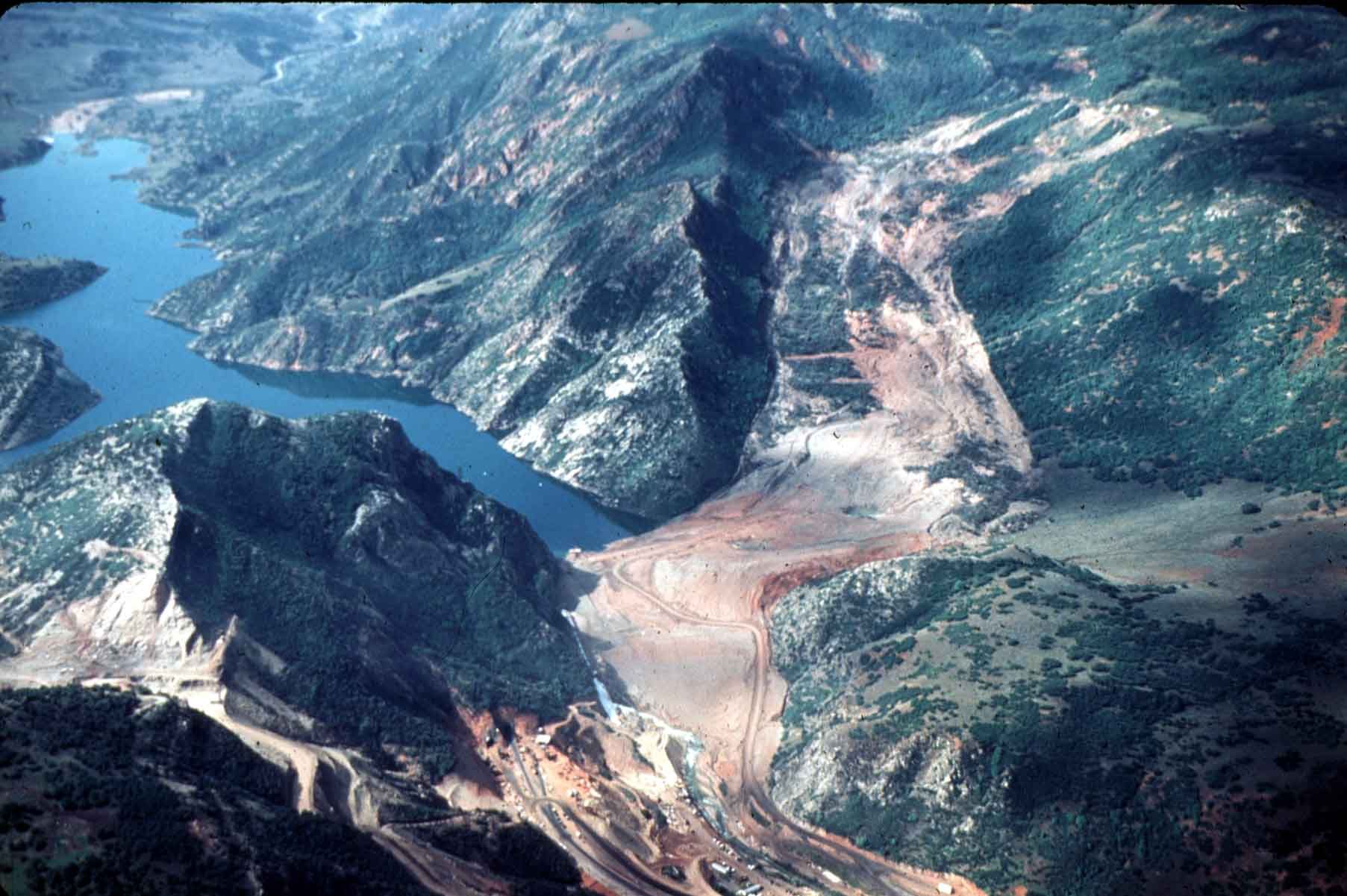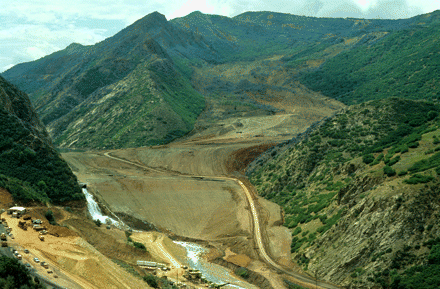The Spring of 1983 in
the Wasatch mountains saw record snowfall totals. It
also experienced a warm winter with an early thaw. This
meant the snow that usually fell on frozen ground had a
chance to saturate the soil. The area around Thistle was
known to be a trouble spot for the ground slipping, as
repairs to the railroad in the area had to be performed
every year. On April 13, 1983, at 7:30 AM, an engineer
noticed the track was out of line by several inches.
They called in a crew to start setting things straight,
as they did every year at that spot. But by that
evening, US Highway 6, on the other side of the valley,
was also noticeably contorting. By the next afternoon,
neither the railroad nor the highway were passable. The
slide started moving at 2 meters
per hour on the morning of
the 13th, but by the evening of the 14th, it was
estimated to be moving at 4 meters perhour.
The slide dammed the Spanish Fork River and Thistle Creek on the 17th, causing crews working to contain the landslide to worry that the dam could burst at some point, sending a wall of water downstream. Work began to not only reroute the destroyed railroad and highway, but to shore up the new dam so that it did not burst. In the process, the small town of Thistle could not be saved. Residents were urged to leave, and the town was abandoned.
The slide dammed the Spanish Fork River and Thistle Creek on the 17th, causing crews working to contain the landslide to worry that the dam could burst at some point, sending a wall of water downstream. Work began to not only reroute the destroyed railroad and highway, but to shore up the new dam so that it did not burst. In the process, the small town of Thistle could not be saved. Residents were urged to leave, and the town was abandoned.

public domain

Work to shore up the dam (photo by T. Waltham)
A diversion plan was
finalized on the 21st to bore a hole through the
mountain opposite the slide 90 feet above the water
line. The water was rising 4 feet per day, so enough
space was needed to ensure the boring crew could finish
the tunnel before the water rose to that level.
Blasting began on the tunnel on April 26 and was completed on May 4. A large metal pipe was fitted to drop the water to the original river level 175 feet below without eroding the tunnel. The pipe fitting was completed on May 16, and the new lake started flowing into the drainage pipe only two days later, on the 18th.
By late August, after the rerouting of the railroad and the highway was complete, it was decided to drain the new lake, as state engineers did not trust the natural dam. A new tunnel was bored at the base of the slide to a point under the lake, then a vertical shaft was placed into the now 200-foot deep lake to meet it. The lake was slowly drained, and that drainage system is the one still use today. The slide is still ongoing. The toe spreads out to cover more of the valley floor every year.
Blasting began on the tunnel on April 26 and was completed on May 4. A large metal pipe was fitted to drop the water to the original river level 175 feet below without eroding the tunnel. The pipe fitting was completed on May 16, and the new lake started flowing into the drainage pipe only two days later, on the 18th.
By late August, after the rerouting of the railroad and the highway was complete, it was decided to drain the new lake, as state engineers did not trust the natural dam. A new tunnel was bored at the base of the slide to a point under the lake, then a vertical shaft was placed into the now 200-foot deep lake to meet it. The lake was slowly drained, and that drainage system is the one still use today. The slide is still ongoing. The toe spreads out to cover more of the valley floor every year.